The Cornell Lab Bird Academy › Discussion Groups › Bird Photography with Melissa Groo › Practice Understanding Birds for Better Photos
-
Bird AcademyBird AcademyDid your sightings surprise you? How do you think the research you did might help inform your photography? Tell us about it.You must be enrolled in the course to reply to this topic.
-
I have had frequent visits from male and female Purple Finches at my feeder. Your pictures are lovely.

-
I am fortunate to live fairly close to a large River in my hometown. This time of the year there are lots of gulls, Mallards, and other variety of ducks. I am usually on a mission to get photos of as many as I can. A couple of days ago I was hoping that I might see a cormorant, and to be honest I wasn't completely sure if it might be too early. Any way to my delight there was this lone Double Crested Cormorant with a traveling companion. It was quite a distance away, swimming down the river, so I was only able to identify the other bird after taking the picture with my zoom lens. Turned out to be a Surf Scoter (as best I can tell after consulting Merlin and my Bird ref). Calm waters, I think around 10 am and not many other birds, ducks, gulls around. These two traveled down the river for quite a while together. As an aside, when I took the picture I was on a walking bridge over the river and as I brought my camera over the railing, my lens hood was nudged off so down the bank and into the river it went.

-
I love watching birds at all times (and often to the annoyance of my family). I work from home and am always watching and listening to what birds are in the yard or at the feeders. Today, a special treat! A male purple finch perched right outside my window. Only the third time in 5 years we have had one in the yard. They seem to show up mid- to late winter. (April is still winter here in Minnesota.) I have found that becoming exceptionally familiar with the common birds (sights, sounds and behaviors) helps the unusual ones stand out. We have house finches every day, but the purple was an unexpected surprise.

 .
. -
I observe birds in front of my apartment, here in France. Most of the time, there are numerous House Sparrows, Common Woodpigeons, Eurasian Collared-Doves, Eurasian Magpies, Eurasian Jays, European Blackbirds, etc. Last year I purchased a Sony DSC-RX10 iv, as I want to use the camera for bird identification and recording my field observations. But unfortunately, I have no enough knowledge in photography and sometimes I think that I am not improving my photography skills despite my efforts. This is why I decided to take this course.

-
I often walk or run the same trail along the Jordan River in Salt Lake City. As it is winter, waterfowl dominate the picture. However, I love seeing Northern Flickers, who migrate down and spend the cold months here. They (and the various guides) have taught me about their foraging, which often happens on the ground. I learned to recognize their typical undulating flight pattern with the beautiful read color of the wings (and the flash of white when seen from behind). Seeing them in the tree, I saw the reliance on berries or other fruits and read that this may account for about one third of their wintery diet. And sure enough, they made me look into the anatomic mechanisms that protect them from brain injury, when they do their staccato pecking.

-
Practicing and learning a lot with this great course. I decided to go for different types of sparrows, as they offer lots of chances for exercising focus and settings --and, as common as they are, I sometimes forget they are sweet and pretty! Enjoying this lessons a lot :)

-
My "gateway" birds were Anna's and Allen's hummingbirds. In Los Angeles we see hummers all year. I realized they will come if you put out a feeder or plant appropriate flowers. They love the pentas I have planted in my yard. They do spend a lot of time resting and make great bird portraits.



-
I enjoy seeing egrets at a local wetlands where I am a docent, and have seen them at a nearby beach. We tell our guests that Snowy Egrets have yellow feet and a dark bill, and Great Egrets the opposite. It is beautiful to watch them fly as well!



-
The bald eagle is a year-round resident here in New York State. They have made a tremendous come-back after their populations were decimated by industrial pollutants, namely DDT. In winter they can be found fishing at openings in the ice on frozen water bodies like lakes, rivers, streams, and ponds. The bald eagle is opportunistic and will eat carrion like road-kill and remnants that hunters leave behind from field-dressing their kills. I was out doing a raptor survey in a field looking specifically for short-eared owls and northern harriers when I happened upon this bald eagle snacking on a ribcage from what looks like a deer. This picture was captured in Monroe County, NY with a Sony A6000. Cheers Sean.

-
Hello everyone, the bird I chose is The Black Swan. I chose this bird because I see it almost every day and it is easily accessible from my home. The habitat that it depends on ranges from fresh, brackish, saltwater lakes to swamp, river and permanent wetlands. Its food sources include aquatic and marshland plants such as underwater algae, leaves of reedmace, stonewort, etc. Occasionally they feed on pasture plants on shore. The current season January is not their breeding/nesting season. The breeding/nesting season for this bird is from February to September in the southern hemisphere. There is no set migration pattern but rather opportunistic responses to high rainfall and drought conditions. It sticks all year-round. The Black swan makes a range of high pitching, musical, bugling and trumpeting calls along with some varieties of softer crooning notes. But when disturbed while nesting or while with young they make a whistling sound. The distinctive behaviors which we can expect to see include both parents share the responsibility to take care of the nest and the cygnets (young swan). For example, while incubating the eggs if an egg accidently rolls out of the nest, then both of the parents will retrieve the egg using their necks. They can become very territorial and aggressive especially during mating/nesting season or when protecting their young. I personally experienced this aggression while I was trying to get a picture of the cygnets during the nesting season. The father swan adopted an aggressive posture which is when the swan constantly stares at you, gives out hissing sounds, stretches its neck upwards, opens its wings wide or when it flaps it wings in an aggressive manner. Even after this, if the perceived threat does not back out it may directly charge at the threat which can be followed by biting. I however understood at the first warning sign itself that the bird does not look normal which was when it was constantly staring at me and arching its neck upwards. I backed out immediately. When I did the research and watched some videos of this course, I got to know what I was doing wrong. I was not being an ethical photographer. I was not using empathy as my guide. My research has now helped inform my photography and going forward I will be careful enough to not disturb the bird or its habitat and not put my ambition before the bird itself. I have attached some pictures of the Black Swan with the cygnets and also the picture where it was constantly staring at me. (Picture 2)


 Kind regards,
Deeksha Goyal
Kind regards,
Deeksha Goyal -
The bird I am interested in is the Great Blue Heron. What kind of habitat does this bird depend on? Wetland habitat with shallow water for feeding. Trees for nesting. What are their food sources? “Highly variable and adaptable. Eats mostly fish, but also frogs, salamanders, turtles, snakes, insects, rodents, birds. Has been seen stalking voles and gophers in fields, capturing rails at edge of marsh, eating many species of small waterbirds.” From Audubon.com Is it breeding or nesting season for this bird? Neither. Looks like breeding occurs from March to May with 2-7 eggs laid. What distinctive behaviors can I expect to see? Solitary stalking food in shallow water. Nesting in trees in colonies - sometimes very large colonies. What sounds do they make, and why? From all about birds.org: CALLS Great Blue Herons are most vocal on the breeding grounds, where they greet their partner with squawking roh-roh-rohs in a “landing call” when arriving at the nest. A disturbance can trigger a series of clucking go-go-gos, building to a rapid frawnk squawk that can last up to 20 seconds. If directly threatened, birds react with a screaming awk lasting just over 2 seconds. Chicks give a tik-tik-tikcall within minutes of hatching. OTHER SOUNDS Both male and female Great Blue Herons snap their bill tips together as part of breeding and territorial displays, a behavior that may be analogous to a songbird’s territorial song. Paired birds often “clapper” at each other, chattering the tips of the bill together. Is the bird migratory or does it stick around all year? Remain all year. I spent some time a few months back trying to catch a GBH catching a fish.


-

 These are not the world's best pictures, lol. But after studying owls for so long and having zero success ever finding them, I picked this little golden-crowned kinglet to find. I didn't know if I could, because they are listed as uncommon here. But not rare. So, I tried. I learned they perch high in trees, like these. And they often frequent cemeteries, so I headed to the closest one. Sure enough, there they were! So fun to look for a bird and actually find it! This was a lifer for me, so that's always fun, too.
These are not the world's best pictures, lol. But after studying owls for so long and having zero success ever finding them, I picked this little golden-crowned kinglet to find. I didn't know if I could, because they are listed as uncommon here. But not rare. So, I tried. I learned they perch high in trees, like these. And they often frequent cemeteries, so I headed to the closest one. Sure enough, there they were! So fun to look for a bird and actually find it! This was a lifer for me, so that's always fun, too. -
I am just learning and know very little about birds but I am thrilled with the information in this course so far. It is late in the season but I have previously seen Meadowlark's and I figure that is a fine place to start. I do not have a very advanced camera but I have to start some where!

-
I grew up hearing Western Meadowlarks. It is a sound that I have always associated with summer. I still hear Western Meadowlaks but I have never, ever SEEN one!
-
-
G'day from Australia, I am currently studying a bird called: Tawny Frogmouth. There is a breeding pair at my work that I have been following for a few years now. Watching them roost throughout the day in the same positions nearly every morning and changing different positions occasionally by midday due to either weather conditions or perceived threats from other people on-site (that don't know the birds are there). They are currently on the nest with at least two chicks visible at the moment. I have noticed that if I get too close to the nest site for photo, the male lets me know by giving me the "move away" look. I am also very mindful of not drawing too much attention to the nest site when there is a raptor about. Cheers Darren
-
Instead of the Swainson's hawk that is leaving for the winter, I think the Blackcap Chickadee is a better choice because it pretty much stays here all year. Also I searched for a quiet place to sit and search for birds with decent light. Outside yesterday I soon realized that even though it was still above +5C, I felt cold! If I feel cold now, then in a month or so, I'd probably get frost bite from being outside. From my home, chickadees come and feed at my suet blocks and I can sit comfortably. It is not what I would choose in warmer climes, but what comes to mind now as autumn is here. Chickadees were busy yesterday and it is time to wash and set up my suet feeders again. I took these images of some autumn and winter birds that are common to my area in Canad. My cameras are Sony 7R4 with 100-400mm lens + 1.4x teleconverter and NikonD850. Blackcap chickadee, junco and Harris sparrow are my images here.

 a
a
-
I love your photos. I am just starting out, know very little, and am excited about this course.
-
-
I chose the Swainson's hawk because it is a prairie bird and a pair lives within walking distance from my home. It is a large bird easy to spot. Here they are very common. But I am unsure about working on these hawks as it is migration time for them now. They will be gone all winter and it is a very long winter on the prairies. Nuthatches, chickadees, house finches and house sparrows are what stay. So I will probably change to something that I can photograph over the winter in order practice the various techniques taught in this course.

-
In choosing a bird to study up on I rejected several because they didn't breed locally. I chose the Black Phoebe since it stays in my part of California all year and is an easy bird to find. That said it is not an easy bird to photograph because I want the bird in flight catching an insect. The good thing about the Phoebe is that they take off from a perch, fly out, catch a bug and return to the same perch if I don't ge too close. That way I get many opportunities. To get sharp images I find 1/4000 works best. To keep noise in control I shoot wide open, F4 so focus is critical. The other challenge is that if I get too close I can’t keep the bird in frame when it takes off so most shots get cropped to 1/4 picture width. Birds of the World states that they prefer perches 1 to 1.5 meters off the ground. It is easier to follow a bird that is perching higher, so I planted some 1.5 bamboo stakes in the marsh where the background was favorable. I saw 3 Phoebes while doing this. The next two days I checked for Phoebes several times and saw none which is unusual. Thinking that they a wider perch I made one from a piece of driftwood. Then I noticed a pair perched on a pipe under the bridge. The book says they separate in the fall but I have seen them flying together though they hunt separately. Checking the 800 phoebe pictures that I have kept since January, I can confirm that they molt in July and August as the book says. They sure did look shabby. Regrettably I was away from April to June and missed the breeding season. I guess this little bird is going to be running my life.

-
Wonderful photo!
-
-
I went looking for Great Blue Herons today. I think if I hadn’t learned more about them beforehand, I would have missed the one bird that was there. Using my binoculars, I scanned the shoreline. Lo and behold - t
 here it was! Poor thing looks like it has a damaged wing.
here it was! Poor thing looks like it has a damaged wing. -
excellent shot!!
-
-
Elegí al halcón Pegrino, un ave poco común en mi departamento Totonicapán, Guatemala, tuve la suerte durante el Global Big Day de encontrar a una pareja de halcones con su pichoncito, pude observar como la hembra procuraba enseñarle a volar. Esta experiencia marcó grandemente mi camino en el avistamiento de aves, ya que hice el primer reporte de la anidación de esta ave en estas coordenadas.
-
I did my research on the Cassin's Kingbird, who commonly overwinters here in CA. It has a look-alike species, the Western Kingbird, who is beginning to show up here as they arrive for the summer in late March and April. The Cassin's Kingbird nests in Riparian woodlands, where they prefer sycamore trees, and parks and neighborhoods with lots of tall trees, frequently eucalyptus. The Western Kingbird prefers a more open savannah-like habitat with open grasslands and a n occasional tree for nesting. This follows Gloger's Rule: In closely related birds, darker species or subspecies are found in more moist habitats (Cassin's Kingbird), while lighter ones are found in drier ones (Western Kingbird). They are difficult to distinguish except for the dark eye stripe that show up better on Western Kingbird and the white throat that shows up better on Cassin's Kingbird. Western Kingbird also has white outer tail feathers, but they get worn away. However, these two birds have very different vocalizations, which I have not learned yet, because I have not taken the sounds workshop, but I will in January 2024. Meanwhile, I am trying to learn sound on my own. I have already taken three great Bird ID classes through Sea and Sage Audubon Society, but the sounds workshop is offered separately. I used Merlin app to record the bird sounds in a park with tall eucalyptus trees where I have often seen the Cassin's Kingbird. Sure enough, a Cassin's Kingbird showed up on the app, and I saw the bird fly to a high branch on the bare tree, where it likes to perch so it can sally forth to catch flying insects. This bird was calling as it flew in, so I was excited to get a chance to hear it's call. I only had my cellphone with me so the pic is unrecognizable. I am waiting until we discuss cameras in this class to buy a camera. I am excited to take my very first picture on an actual camera. I will post it then.
-
I chose 2 birds to research as one is uncommon and the other rare. Last year I had a Red-Breasted Nuthatch arrive for the first time. He stayed until May. This year, I have 4! 2 pair. I love how tiny they are and how they flit around so very fast. Upside down, right side up - they are quick. I have learned that they are actually an irruption bird for my location. Typically they prefer coniferous forests with hemlocks and pines to suburban New England. I see them go into the hemlocks in my yard when they leave the feeders, but often they will line up, like the Chickadees they usually arrive with, in a dogwood. I've had fun trying to get good photos of them, and look forward to learning more about altering the settings, as I currently use AutoFocus on Canon Powershot SX70. They seem to love the peanuts and seed cylinders with sunflower and cherries. I do believe they may return to the forest in other years if pine cones are plentiful. Highlight of the season was a day that I was re-filling the peanuts and all 4 arrived on my feeder pole - seemingly unconcerned with my presence. The moment was really something. They are tiny. The sound they make is repetitive and "nasal" sounding like "eeeen." The second bird is very rare for New England, and arrived on the last day of the Great Back Yard Bird Count, which I have participated in for many years. After consulting with two naturalist friends, we determined we had a Bullock's Oriole. E-Bird confirmed thanks to the photos I submitted. This bird is also a migrator and is not only not breeding right now, but is way off course. Bullock's are a west coast bird. She was particularly fond of the cherries that are in my seed cylinders, but also dined on peanuts and plain suet. She remained in the yard for several days, but it's been a week now with now sightings. She would leave the feeder and I would find her in deciduous trees near the cardinals. Bullock's orioles like to forage for caterpillars and fruits in the tree canopy - neither of those are yet available here in New England. I hope she has made a journey to some place better suited. Beautiful bird. This is my first course and have already learned a lot! Thank you!



-
I chose the Red-Tailed Hawk to research for a couple of reasons: 1) because they're cool and 2) they live very close to my house. I've never seen one in my yard, but I have seen one perched on the light post in front of my house. Last spring/summer, I was lucky enough to witness a juvenile mature over the summer. Once I established that I wouldn't harm or disturb him, he was content to have me around, to take pics, and to draw him. Now, the parents on the other hand, were not. While the hawk was still pretty vulnerable, they would swoop in and "poke" at him until he flew off with them. Never very far though. There are a cluster of trees that the hawks would just fly between. When I went looking for a hawk this morning, I went right to that area of trees. To my disappointment, they were not there; however, a little ways a way, I saw an adult gliding in. I found them perched on a tree, huddled (it's 11 degrees here) down. He was content to let me take pictures, draw him, and just observe him for 10-15minutes. I moved on (another bird caught my eye!), but he remained there. Though I'd had previous experience with this species before, doing the research gives me more specifics about mating patterns, what different flight patterns mean, and so forth, which will be helpful as I try to find some little ones again this spring!

-
What a wonderful course! Thank you, Melissa! I took up nature photography about 4 years ago after I retired. I wish I had discovered this hobby years ago! I've been taking online classes, trying to learn as much as I can about nature photography. I've been focused on landscapes and plants (I'm a Botanist). Loving birds, I decided to buy a reasonably-priced super telephoto lens try learning bird & wildlife photography. By the time the lens arrived, I had a broken wrist and couldn't even lift it. Finally, 3 months later, I was able to give it a try. These are my 1st attempts at bird photography taken recently. This led me to signing up for this online class! I was able to hoist the lens onto my tripod and swivel the tripod trying to photography ducks & geese wintering on the river and be a very safe distance as to not disturb them. So fun! I think the biggest surprise is truly noticing our very common Canada Geese and how the different groups were so territorial (see bottom photo). I hear them all the time but I was truly honed in and watching & listening to them intently. I had done research using the All About Birds website to ID the birds and their vocalizations. This website is truly amazing!! Photos taken with a Canon EOS 6D Mark II and Sigma 15--600 Contemporary Lens. Photos: Ring-Necked Duck, Common Merganser (either a female or immature male?), and Canada Geese interactions when two different groups merged.



-
 I chose to photograph a Cedar Waxwing because I've never photographed one before and I think are gorgeous. My sighting did surprise me! I found that Cedar Waxwings prefer Cotoneaster shrubs and there's a bunch of those plants not too far from my house. I wanted to catch golden hour too so I hurried over this morning and saw a flock of about 50 Cedar Waxwings right away!
In the photo, there are lots of Cotoneasters nearby but this is a tree near the Cotoneasters, I believe. So, I deduced that they are resting in between berry breakfast. I did see them in the Cotoneasters when I first arrived but they never went back. That makes me wonder if they were waiting for me to leave before they would feast again. I will keep that in mind next time.
The Cotoneasters themselves are pretty bushy so it was much easier to photograph them in the tree although they were a bit high up. I'd love to catch them in a shrub to be eye to eye with them. They are flocking birds and I saw at least 20 of them in the tree and then at least 50 when they flew off together. Their "seee" sound is magical but I couldn't find out why they make that sound. I did find out that it is common for them to call though, especially in a flock like I saw them.
I chose to photograph a Cedar Waxwing because I've never photographed one before and I think are gorgeous. My sighting did surprise me! I found that Cedar Waxwings prefer Cotoneaster shrubs and there's a bunch of those plants not too far from my house. I wanted to catch golden hour too so I hurried over this morning and saw a flock of about 50 Cedar Waxwings right away!
In the photo, there are lots of Cotoneasters nearby but this is a tree near the Cotoneasters, I believe. So, I deduced that they are resting in between berry breakfast. I did see them in the Cotoneasters when I first arrived but they never went back. That makes me wonder if they were waiting for me to leave before they would feast again. I will keep that in mind next time.
The Cotoneasters themselves are pretty bushy so it was much easier to photograph them in the tree although they were a bit high up. I'd love to catch them in a shrub to be eye to eye with them. They are flocking birds and I saw at least 20 of them in the tree and then at least 50 when they flew off together. Their "seee" sound is magical but I couldn't find out why they make that sound. I did find out that it is common for them to call though, especially in a flock like I saw them.
Read More:
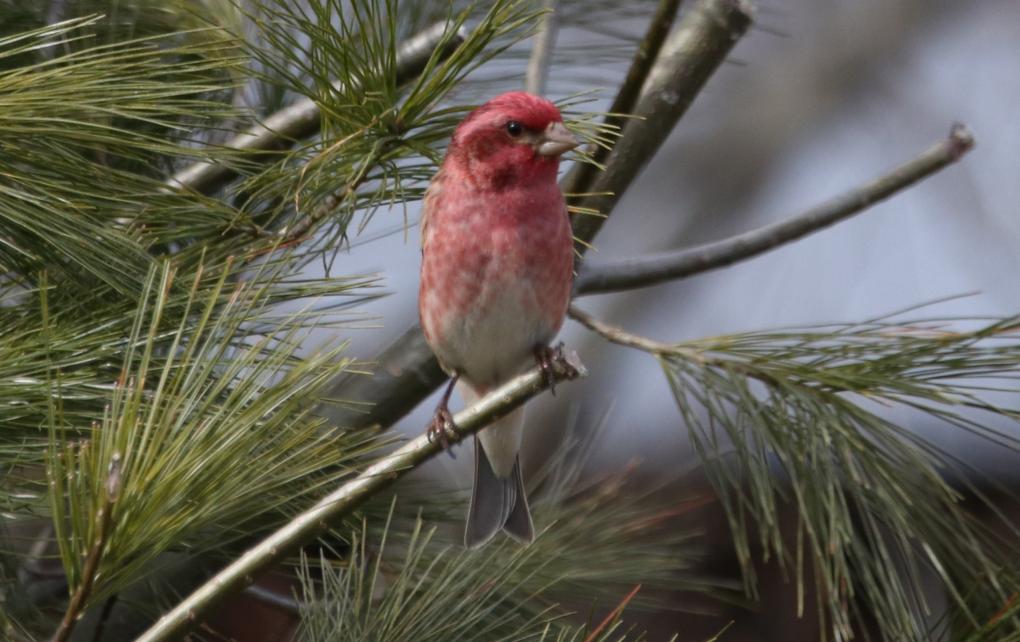
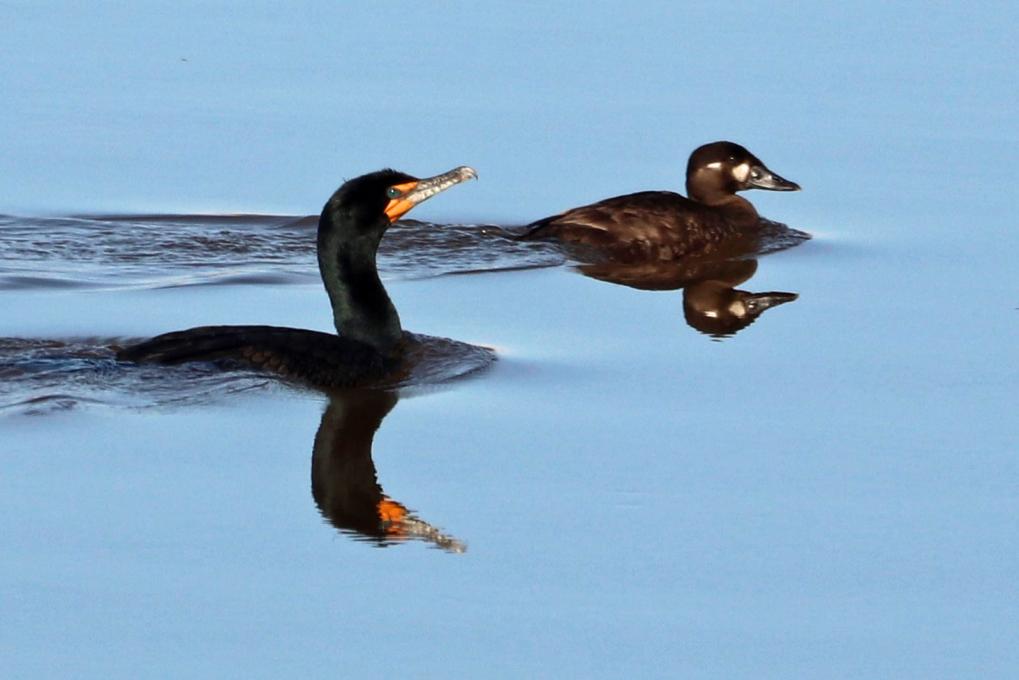
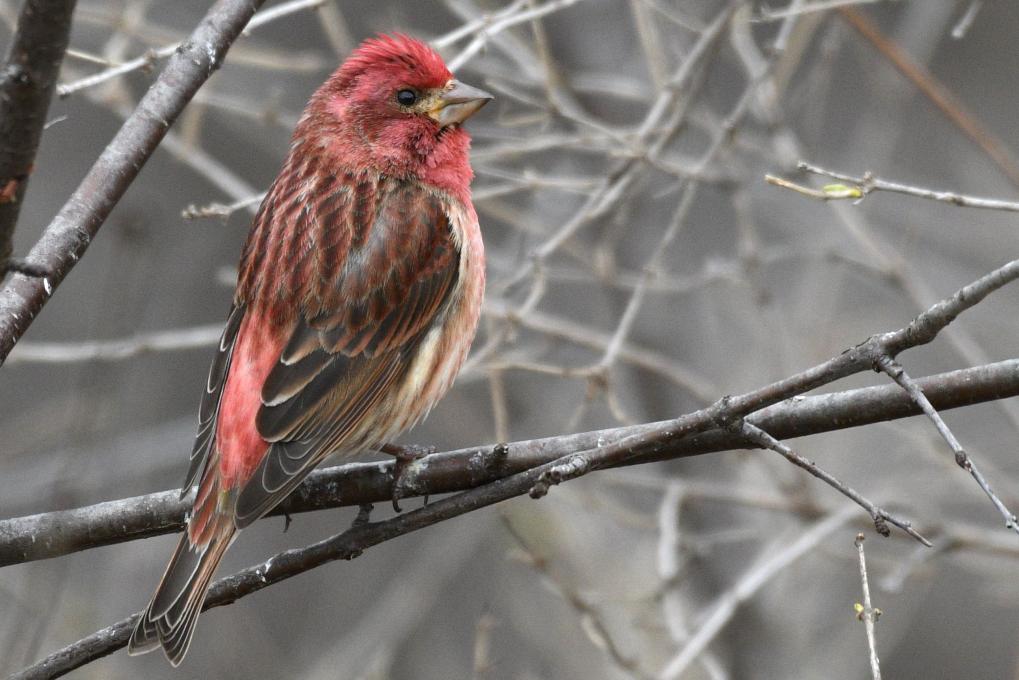
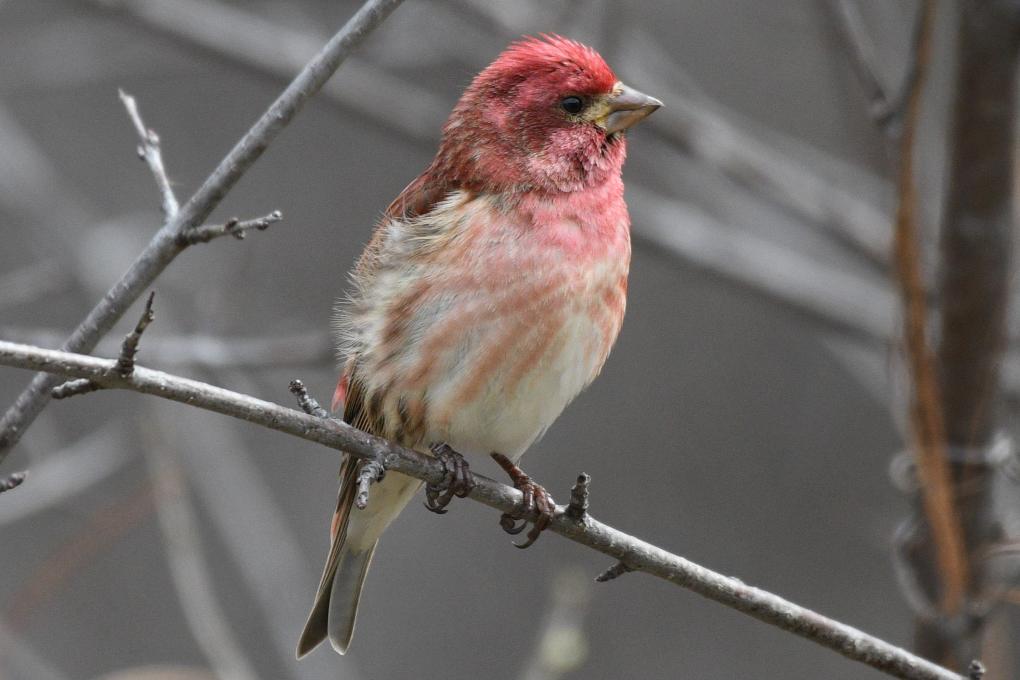 .
. 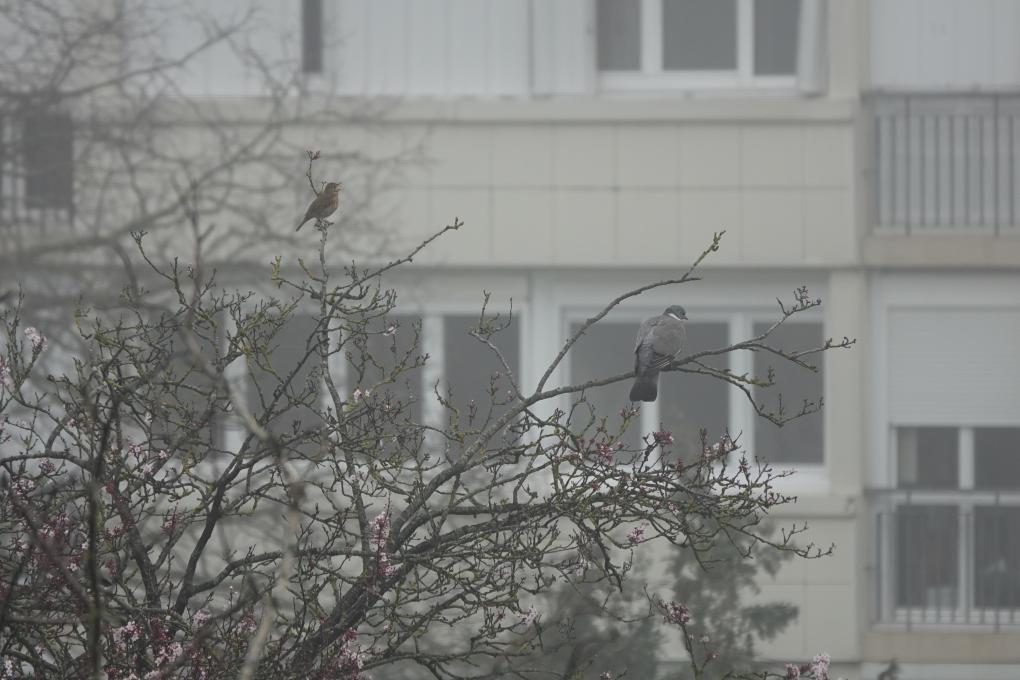
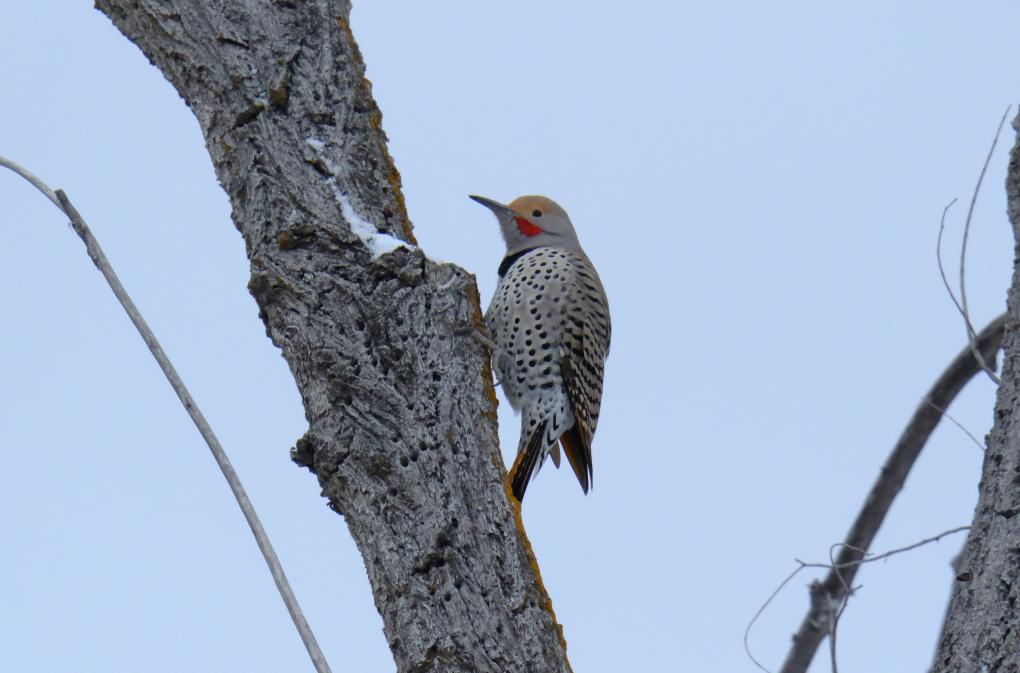
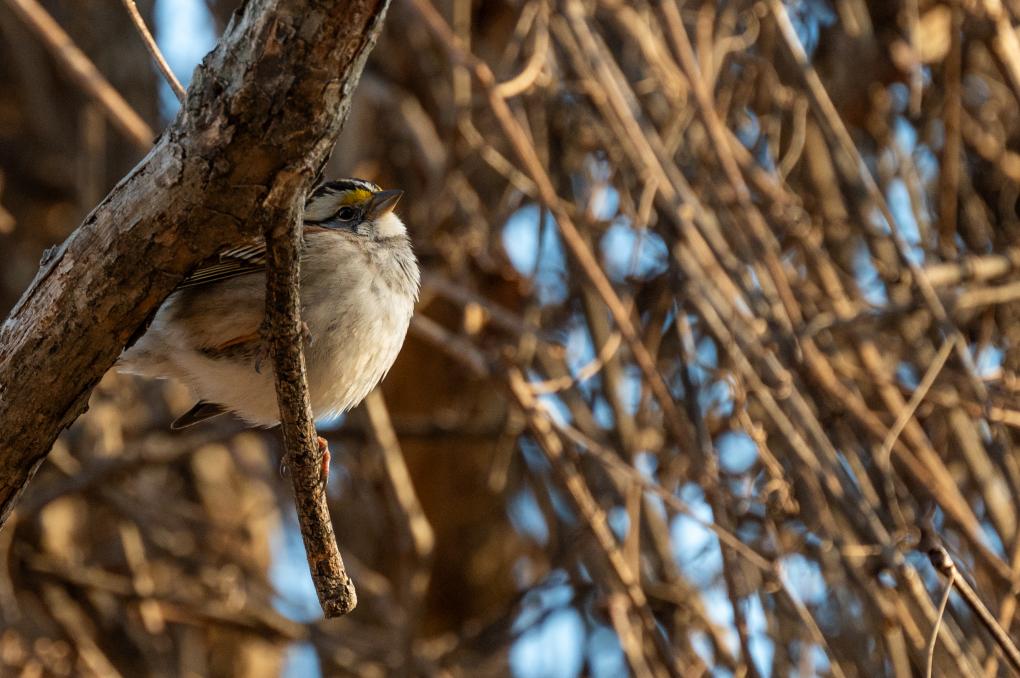
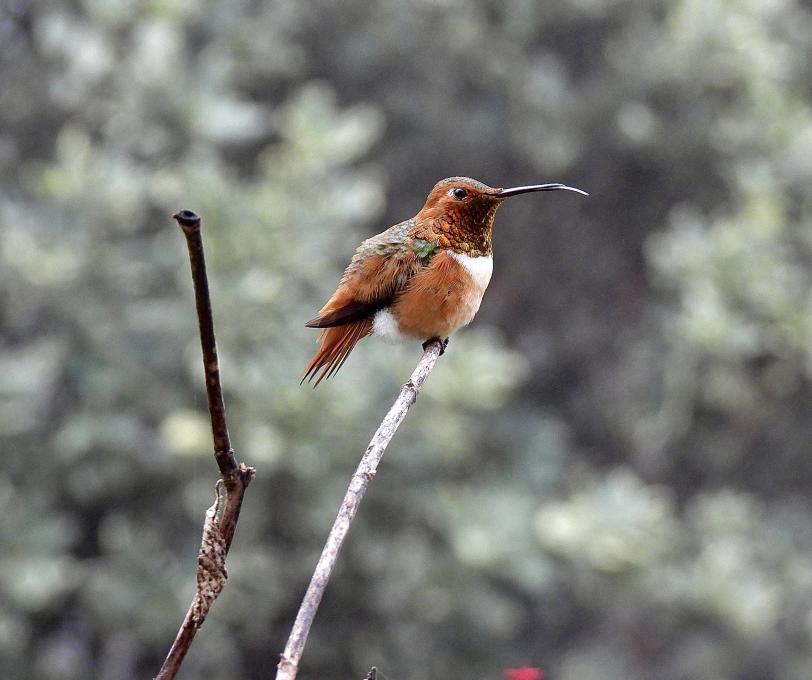
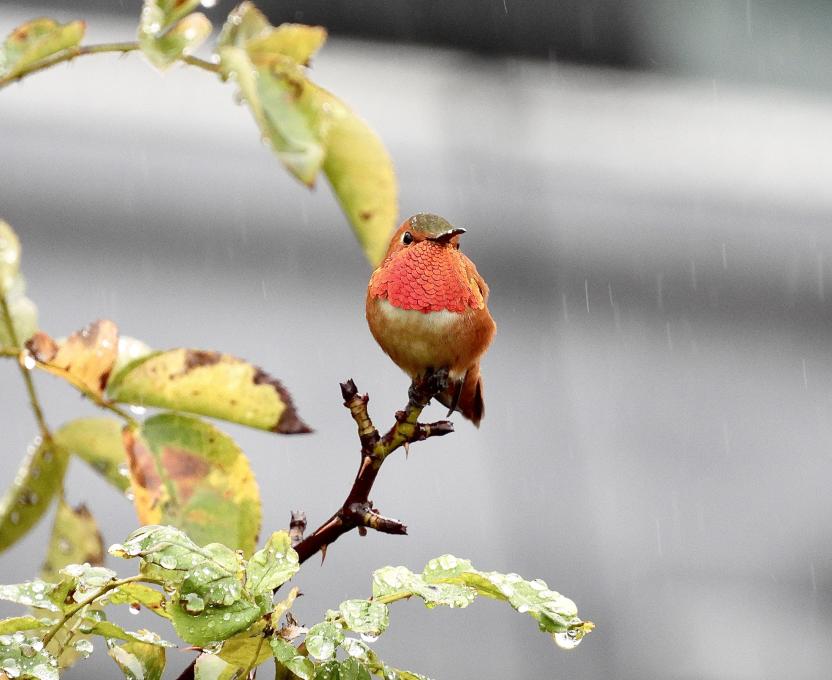
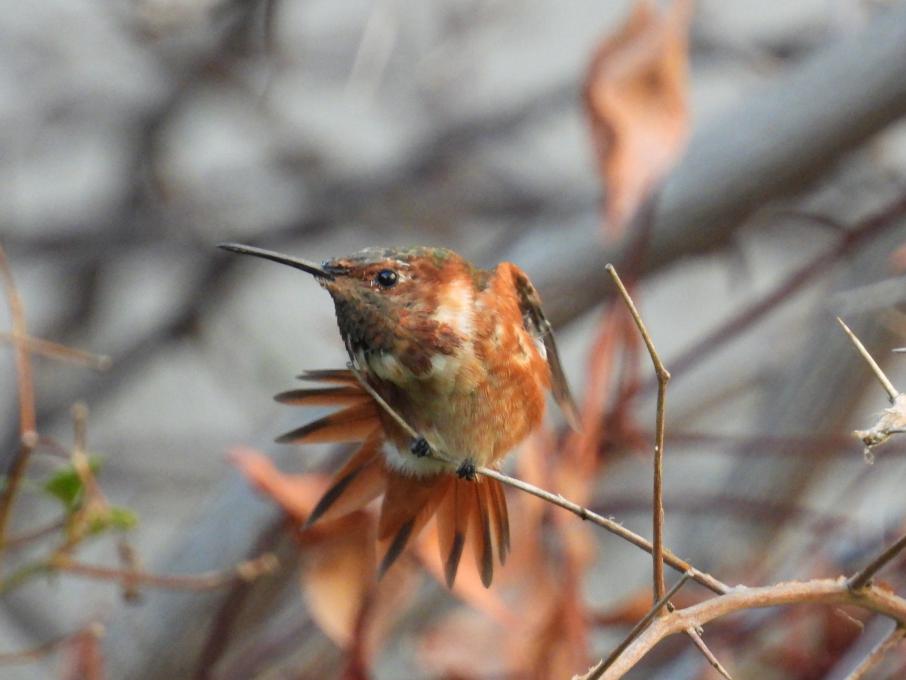
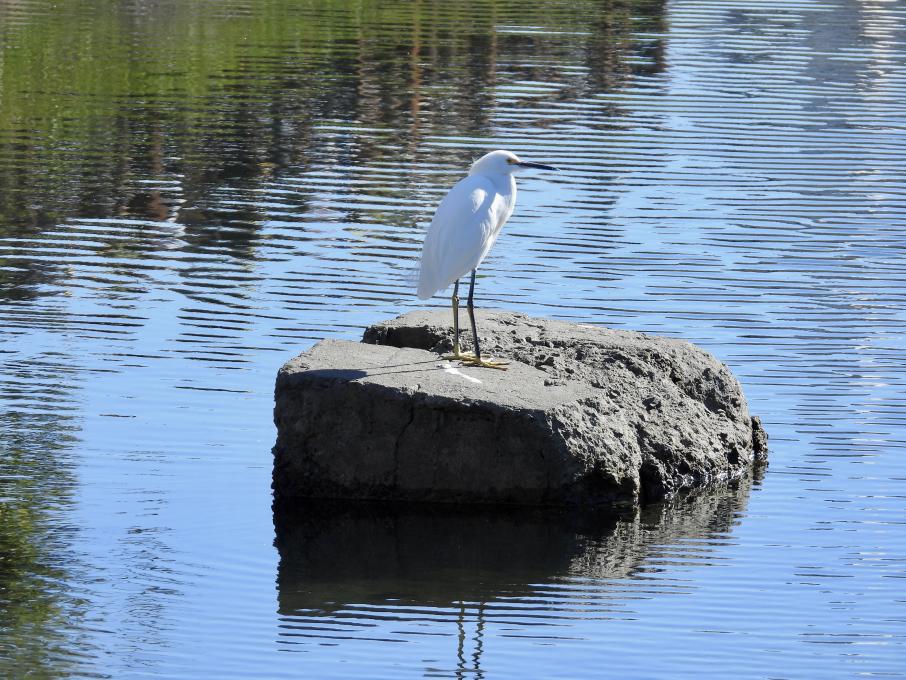
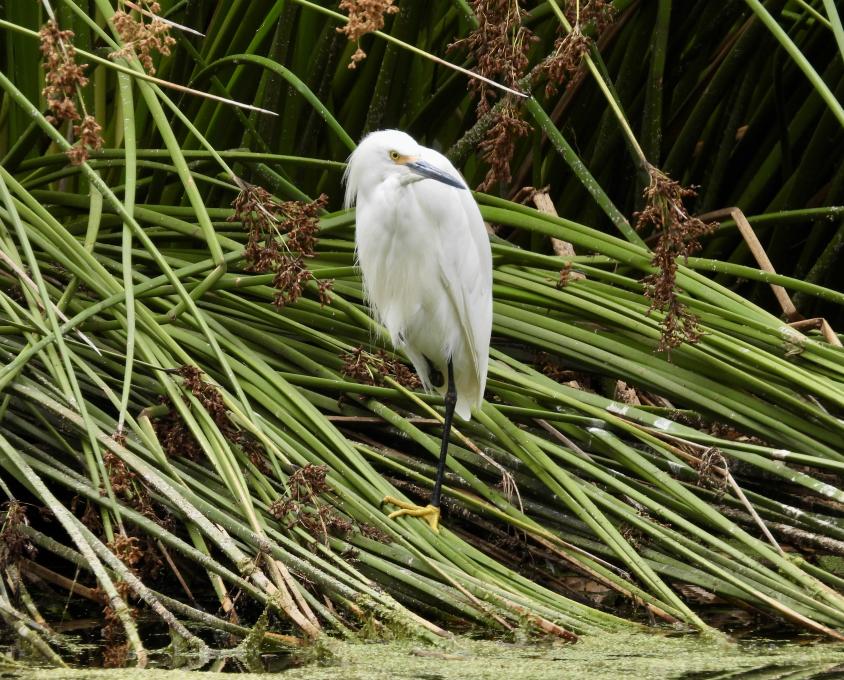
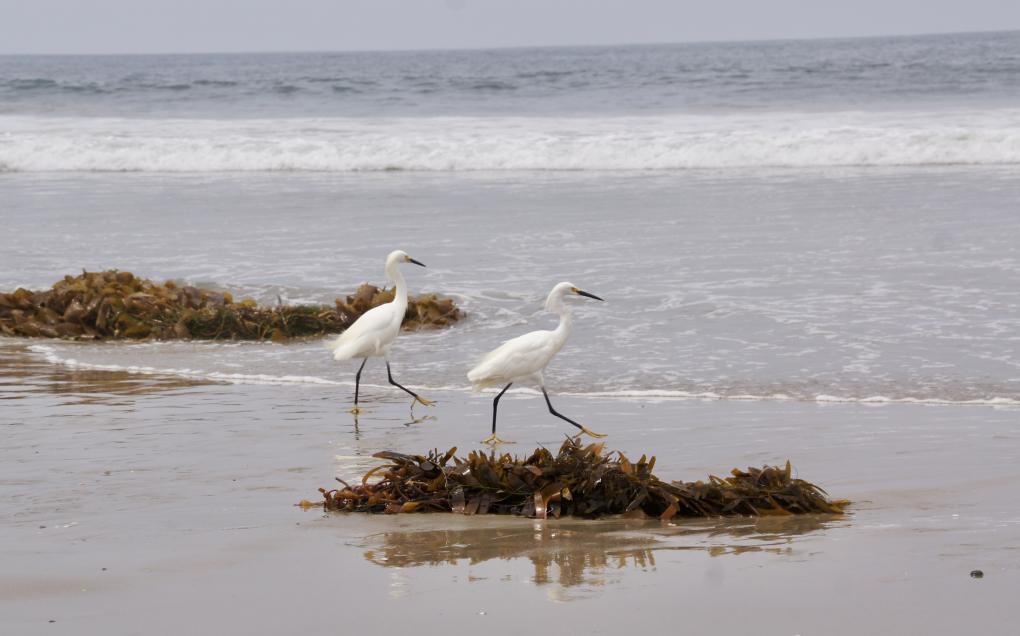
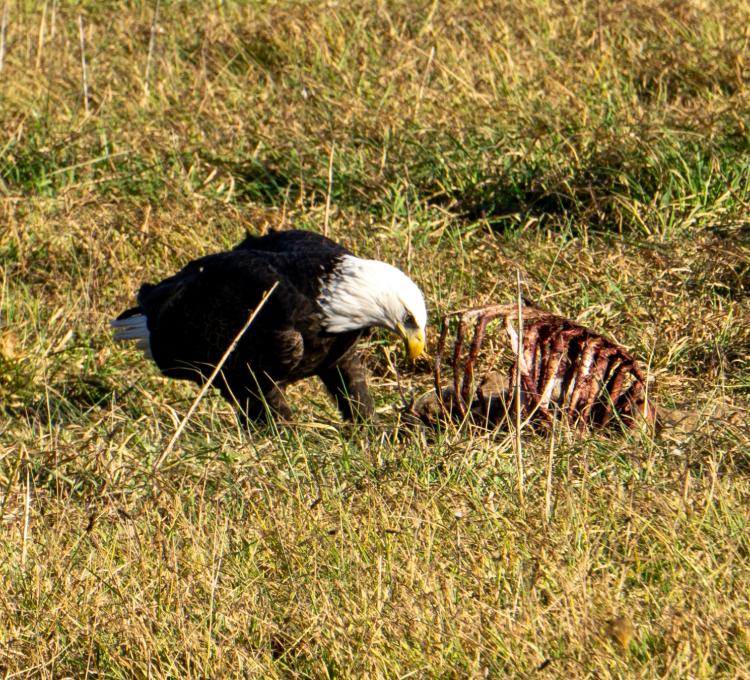
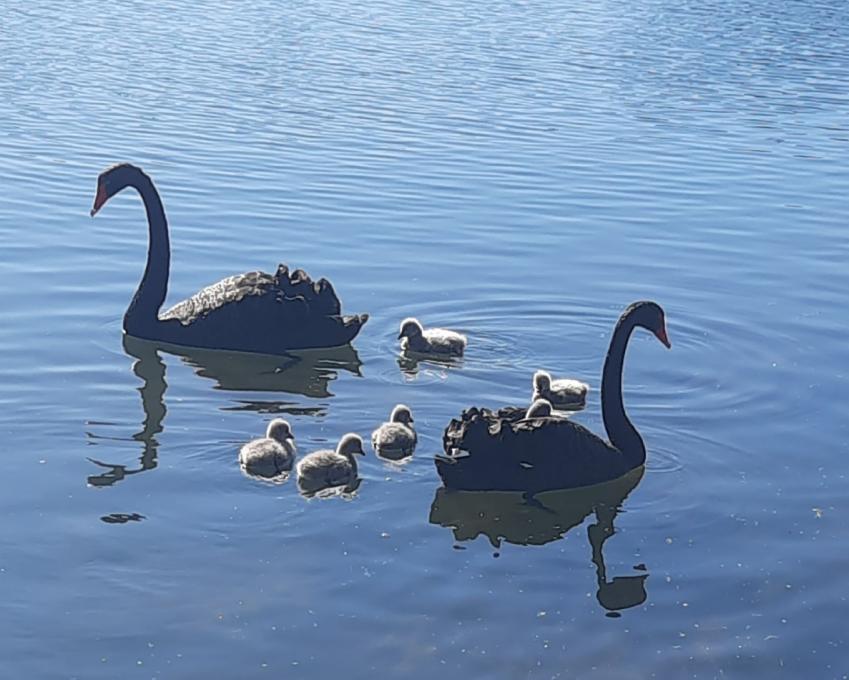
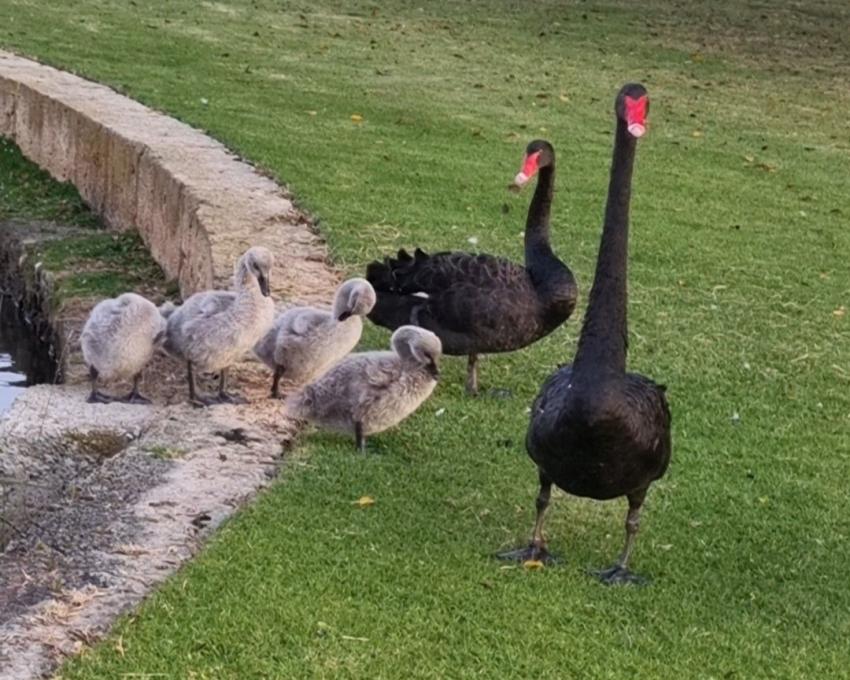
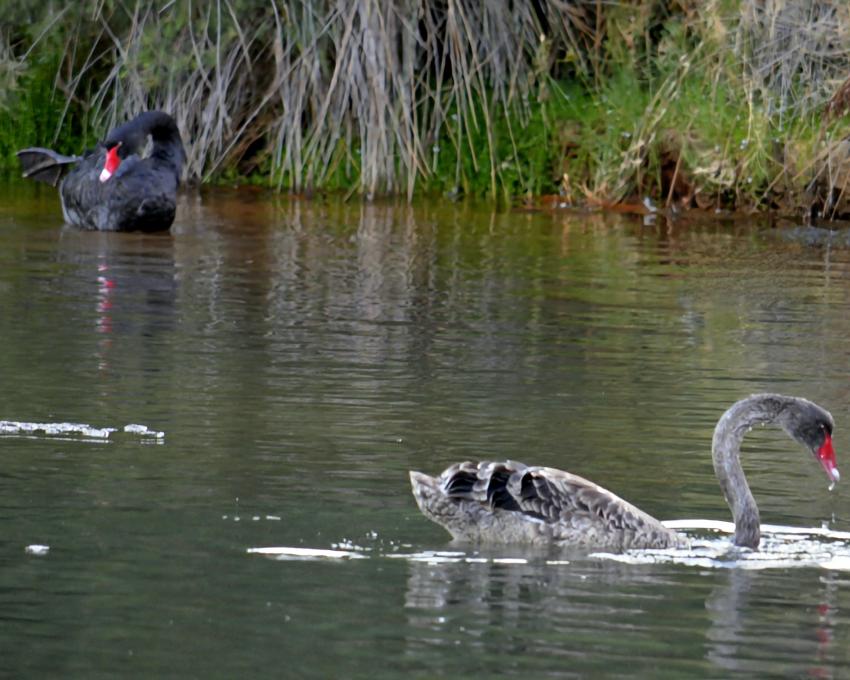 Kind regards,
Deeksha Goyal
Kind regards,
Deeksha Goyal 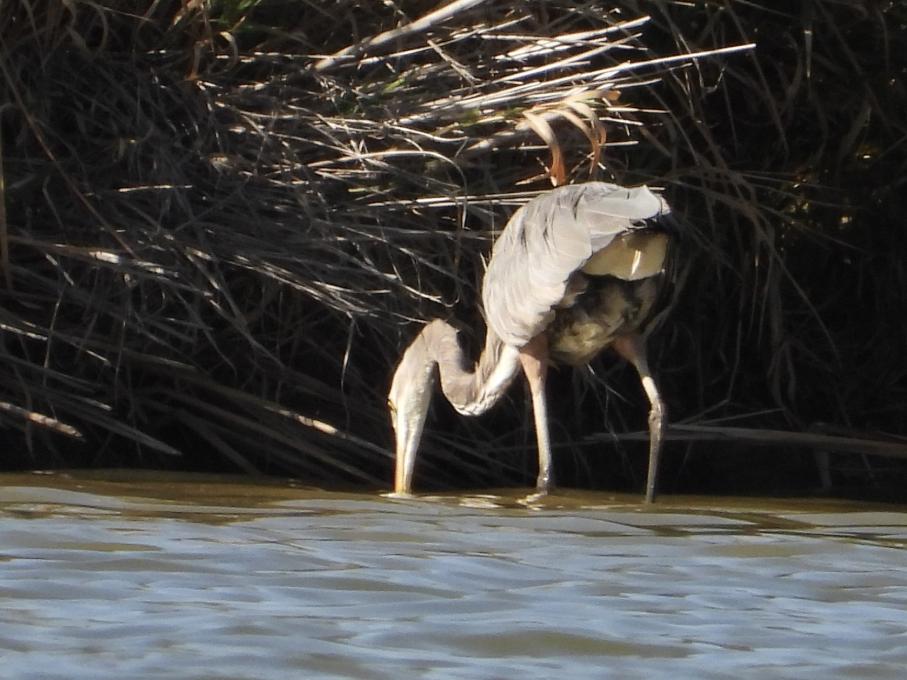

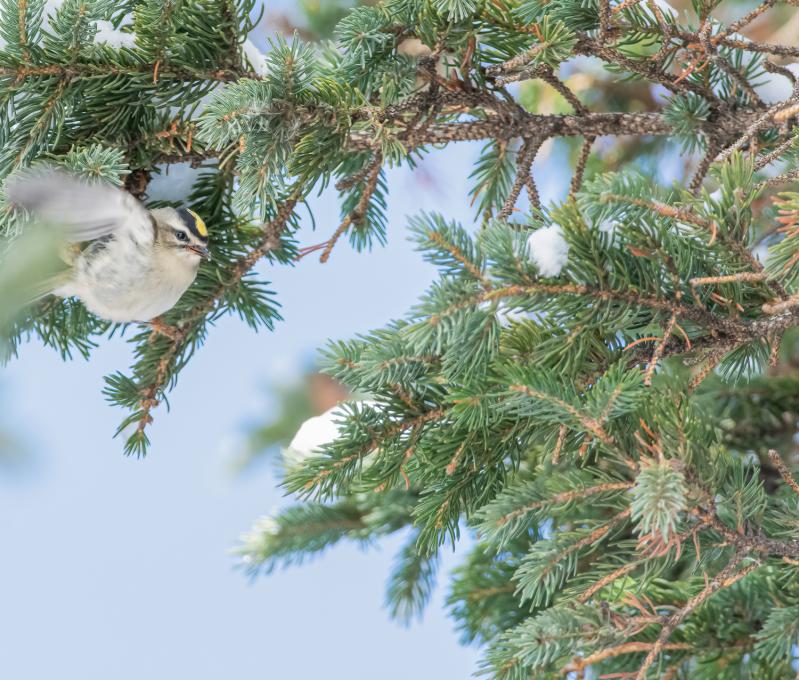
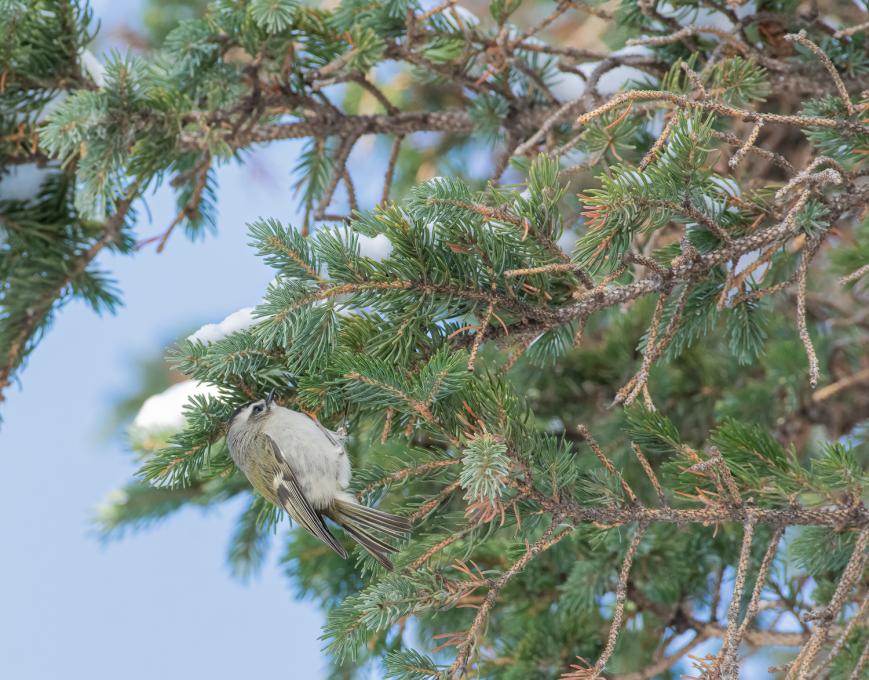 These are not the world's best pictures, lol. But after studying owls for so long and having zero success ever finding them, I picked this little golden-crowned kinglet to find. I didn't know if I could, because they are listed as uncommon here. But not rare. So, I tried. I learned they perch high in trees, like these. And they often frequent cemeteries, so I headed to the closest one. Sure enough, there they were! So fun to look for a bird and actually find it! This was a lifer for me, so that's always fun, too.
These are not the world's best pictures, lol. But after studying owls for so long and having zero success ever finding them, I picked this little golden-crowned kinglet to find. I didn't know if I could, because they are listed as uncommon here. But not rare. So, I tried. I learned they perch high in trees, like these. And they often frequent cemeteries, so I headed to the closest one. Sure enough, there they were! So fun to look for a bird and actually find it! This was a lifer for me, so that's always fun, too. 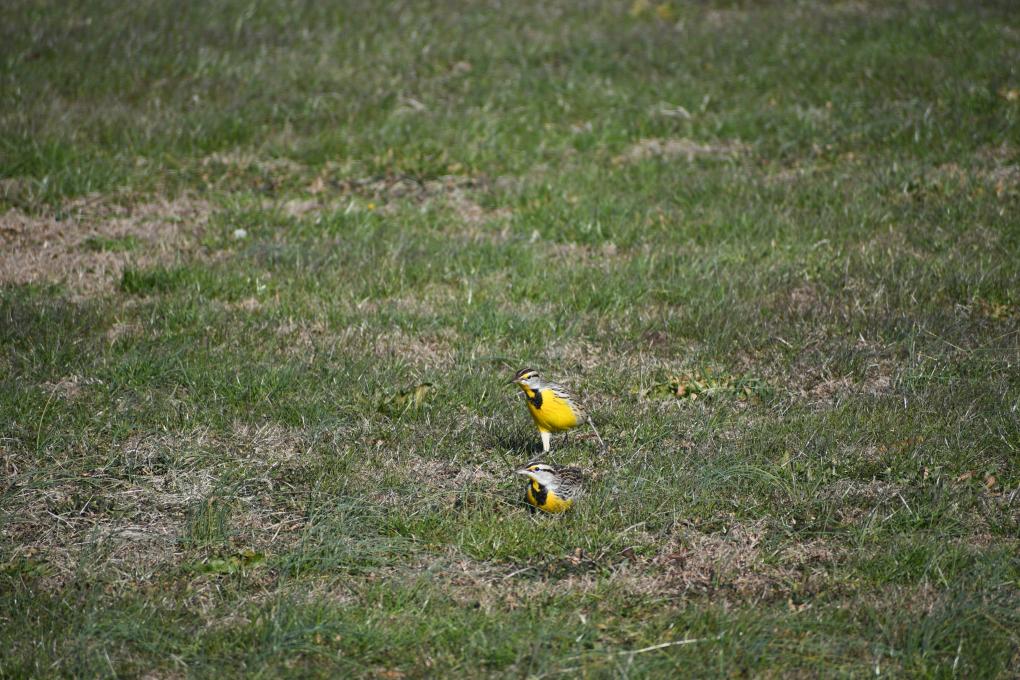
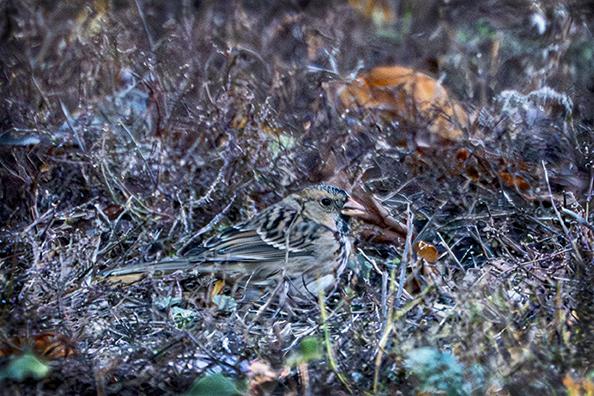
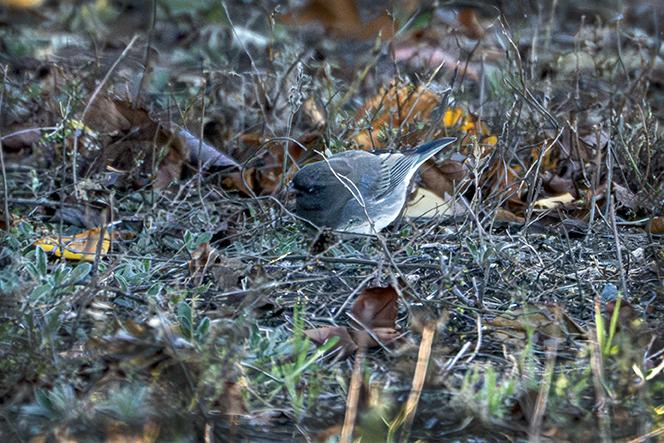 a
a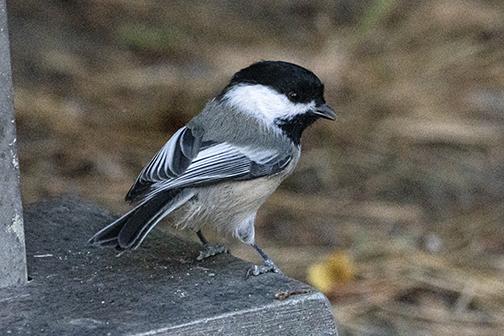
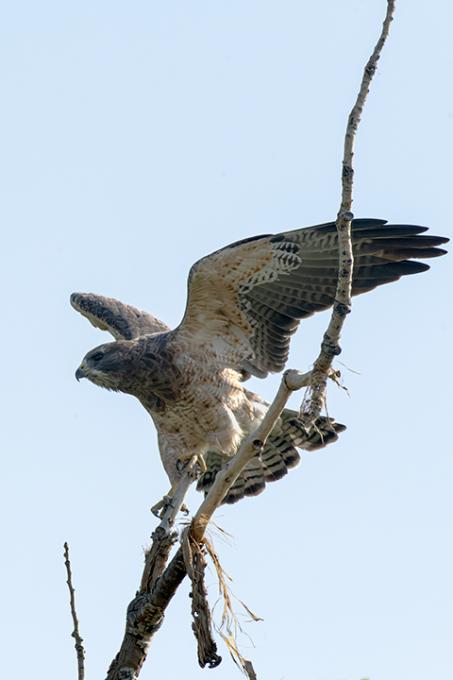
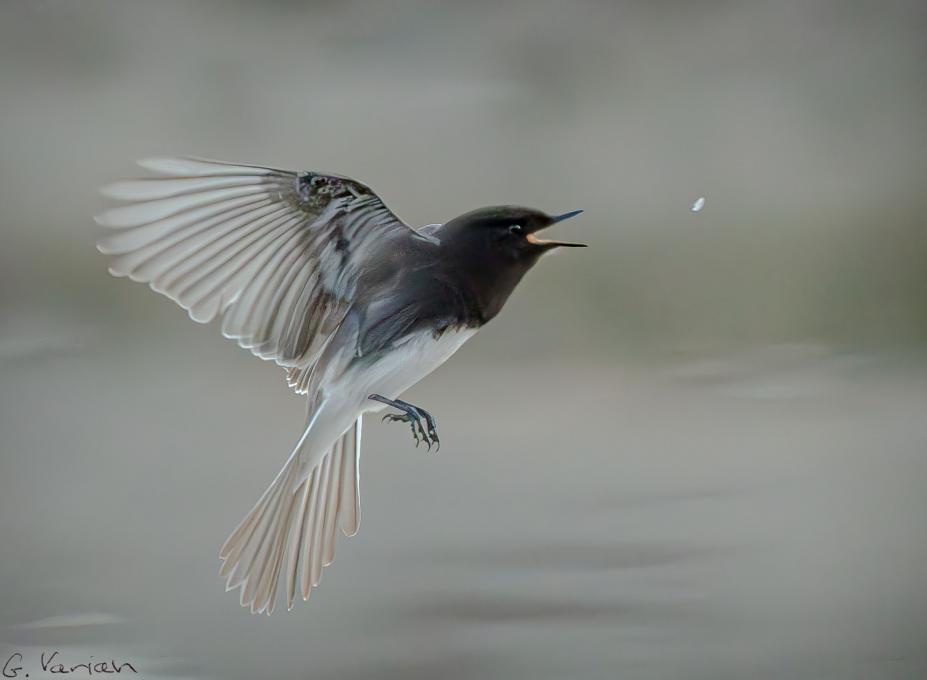
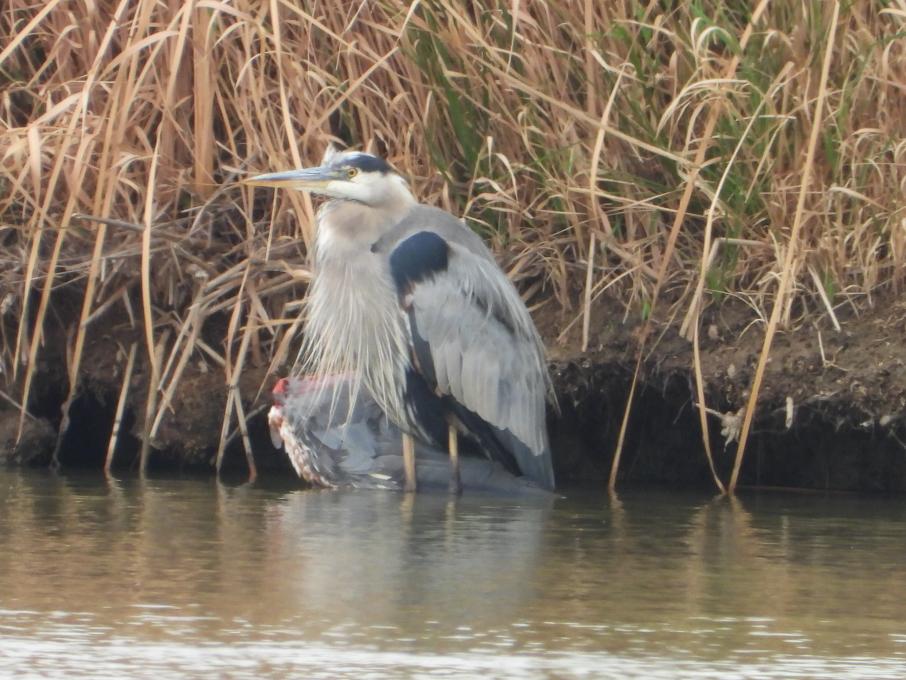 here it was! Poor thing looks like it has a damaged wing.
here it was! Poor thing looks like it has a damaged wing. 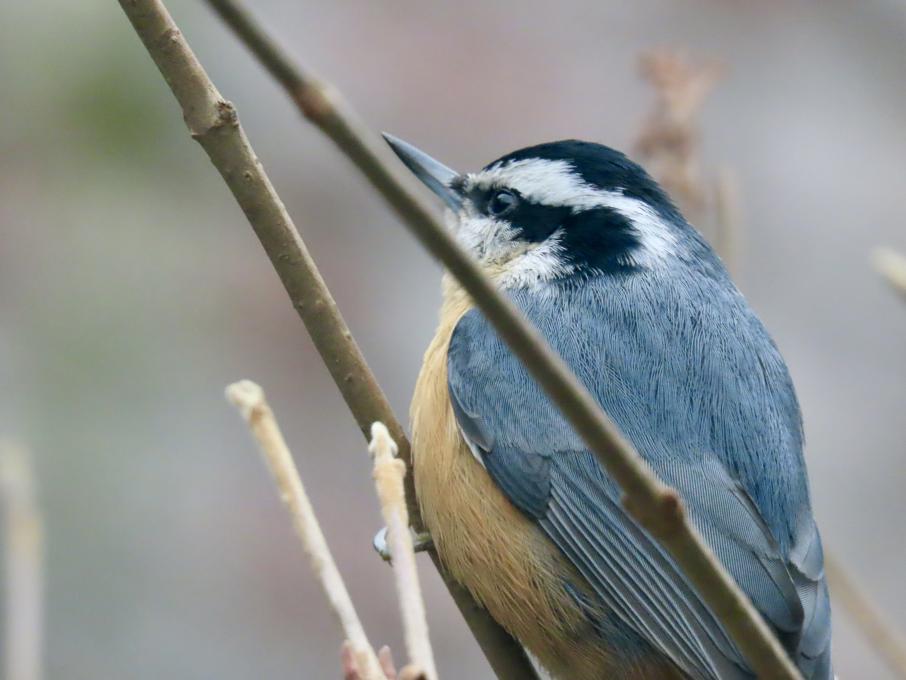
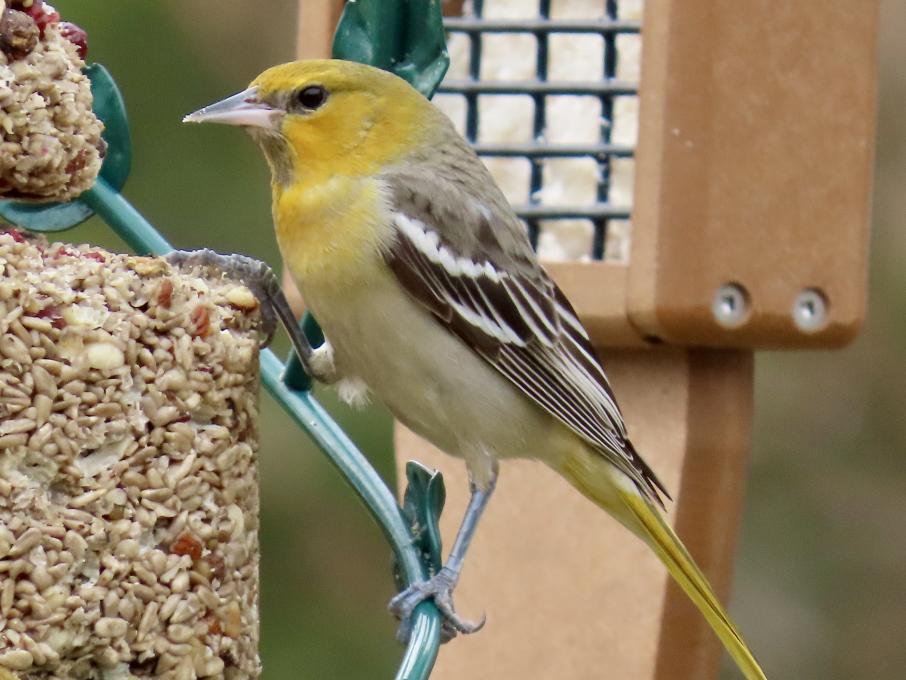
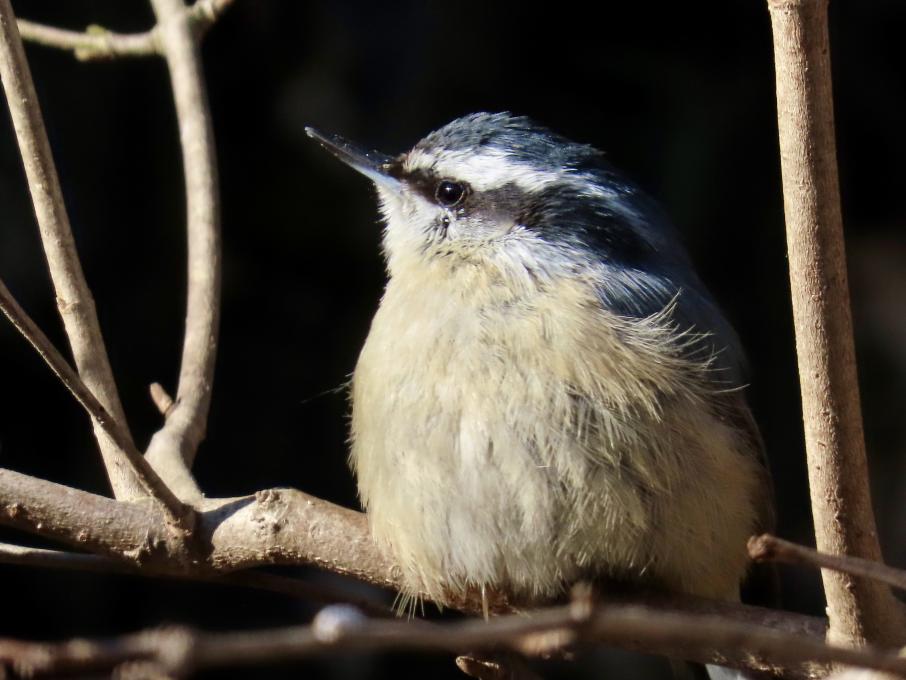
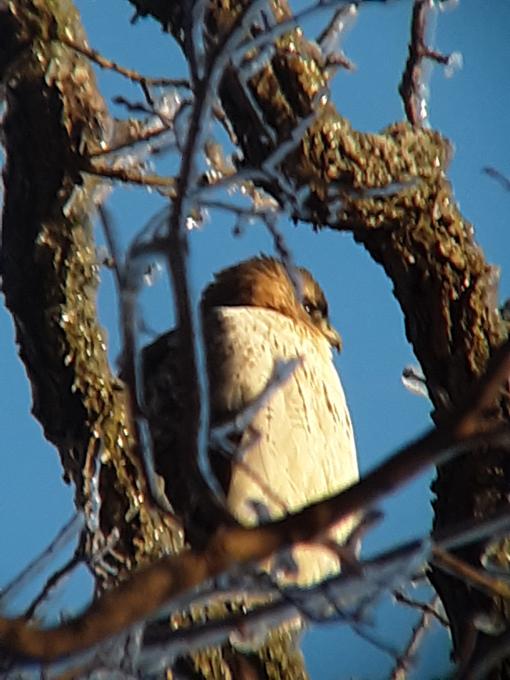
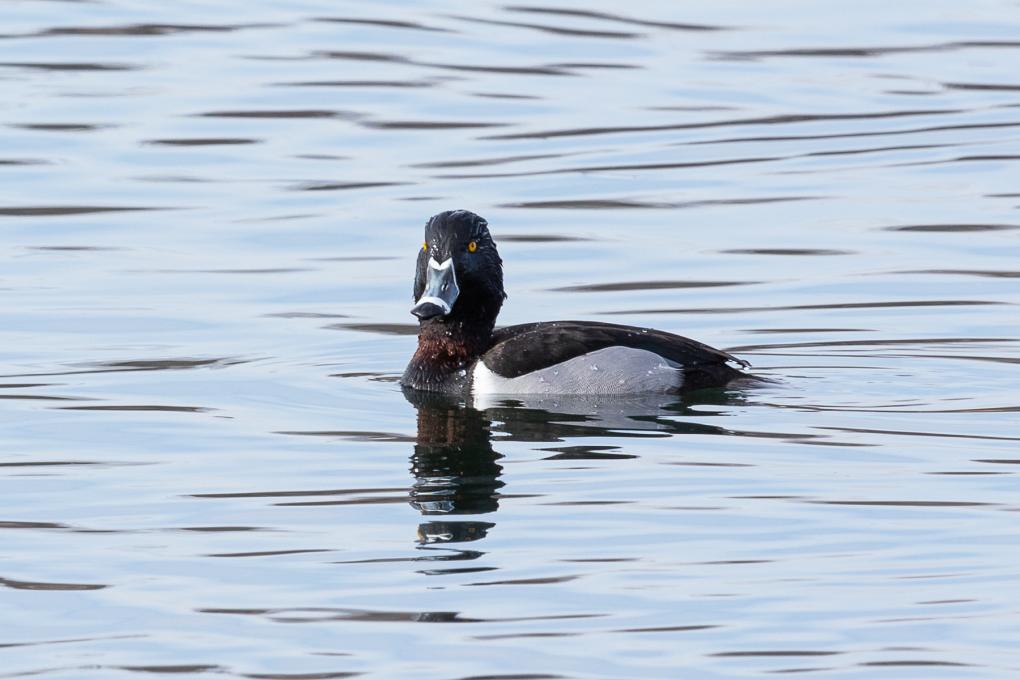
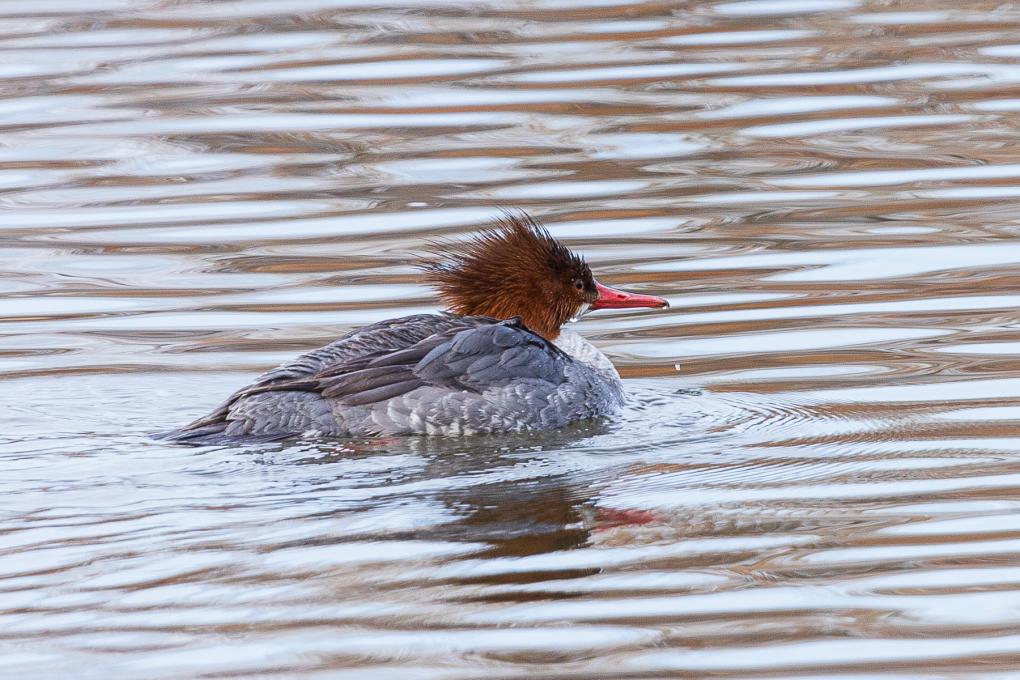
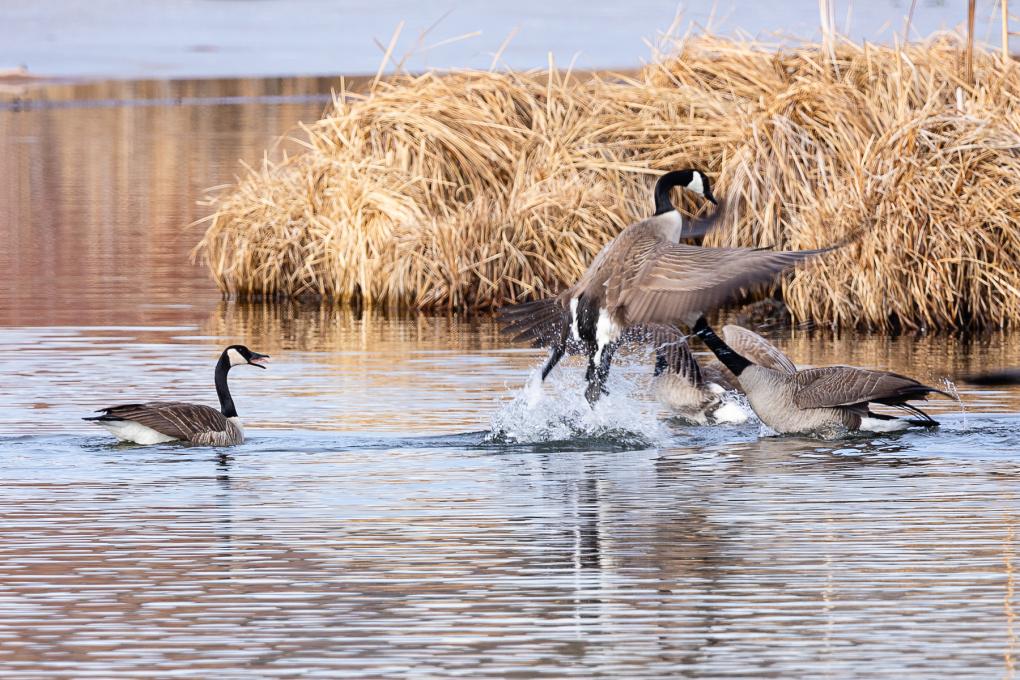
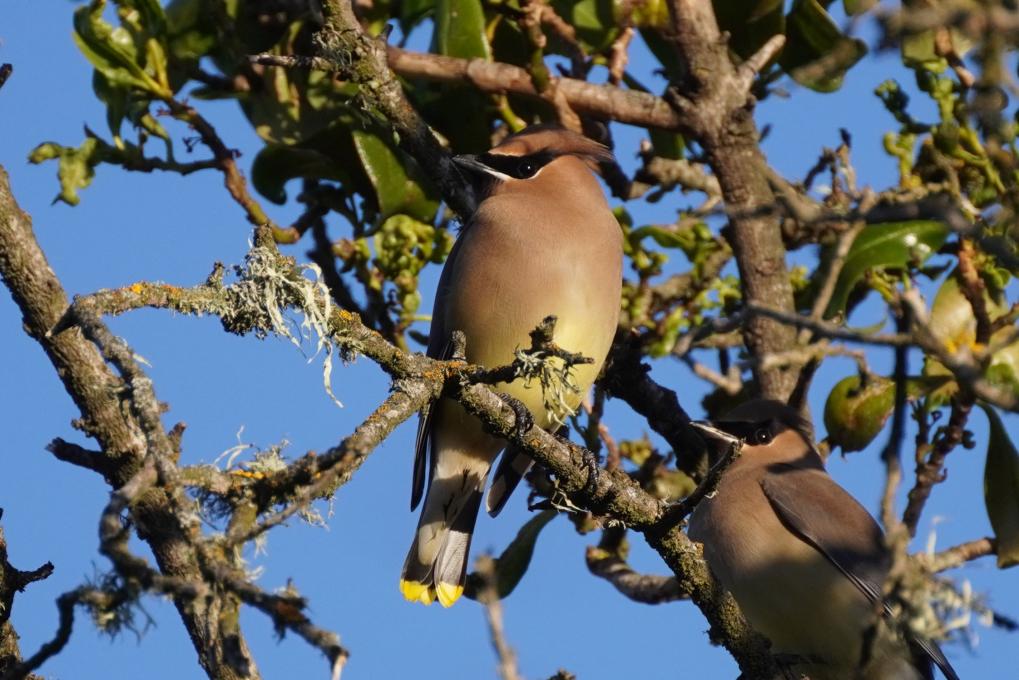 I chose to photograph a Cedar Waxwing because I've never photographed one before and I think are gorgeous. My sighting did surprise me! I found that Cedar Waxwings prefer Cotoneaster shrubs and there's a bunch of those plants not too far from my house. I wanted to catch golden hour too so I hurried over this morning and saw a flock of about 50 Cedar Waxwings right away!
In the photo, there are lots of Cotoneasters nearby but this is a tree near the Cotoneasters, I believe. So, I deduced that they are resting in between berry breakfast. I did see them in the Cotoneasters when I first arrived but they never went back. That makes me wonder if they were waiting for me to leave before they would feast again. I will keep that in mind next time.
The Cotoneasters themselves are pretty bushy so it was much easier to photograph them in the tree although they were a bit high up. I'd love to catch them in a shrub to be eye to eye with them. They are flocking birds and I saw at least 20 of them in the tree and then at least 50 when they flew off together. Their "seee" sound is magical but I couldn't find out why they make that sound. I did find out that it is common for them to call though, especially in a flock like I saw them.
I chose to photograph a Cedar Waxwing because I've never photographed one before and I think are gorgeous. My sighting did surprise me! I found that Cedar Waxwings prefer Cotoneaster shrubs and there's a bunch of those plants not too far from my house. I wanted to catch golden hour too so I hurried over this morning and saw a flock of about 50 Cedar Waxwings right away!
In the photo, there are lots of Cotoneasters nearby but this is a tree near the Cotoneasters, I believe. So, I deduced that they are resting in between berry breakfast. I did see them in the Cotoneasters when I first arrived but they never went back. That makes me wonder if they were waiting for me to leave before they would feast again. I will keep that in mind next time.
The Cotoneasters themselves are pretty bushy so it was much easier to photograph them in the tree although they were a bit high up. I'd love to catch them in a shrub to be eye to eye with them. They are flocking birds and I saw at least 20 of them in the tree and then at least 50 when they flew off together. Their "seee" sound is magical but I couldn't find out why they make that sound. I did find out that it is common for them to call though, especially in a flock like I saw them.